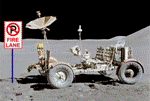Law, College of

Space Law Documents
Document Type
Article
Date of this Version
6-1982
Citation
Washington, D.C.: U.S. Office of Technology Assessment, June 982, ix, 391 p. Report no. OTA-STI-177.
Abstract
The United States orbited its first satellite in 1958, nearly a quarter century ago. In the intervening years, the United States has made great strides in developing peaceful and practical uses of space technology. However, in spite of the dramatic successes of the space program, among which are the recent flights of the Columbia shuttle orbiter, many informed observers express considerable unease about the future of our civilian efforts in space, particularly in light of increased foreign competition and stringent fiscal restraints.
Because of these uncertainties and also because of emerging new prospects for using the space environment, this assessment was requested by the Senate Committee on Commerce, Science, and Transportation, and endorsed by the House Committee on Science and Technology. It investigates America’s civilian space policy from the point of view of its effects on the primary areas of space applications technology, including space transportation. It does not address military/intelligence applications projects, activities in space science, or space exploration except insofar as these affect civilian applications. Its aim is to investigate Federal policies, public and private institutions, and the external circumstances that shape space applications today. In keeping with this emphasis, the assessment explores the question of Federal involvement in space research and development (R&D), the issues that arise in the transition from R&D to full-fledged operational status, when and under what circumstances commercial involvement is appropriate, and how to respond to commercial competition from overseas. It also addresses questions of space policy suggested by the Nation’s experience with applications of technology in space.


Comments
U.S. government work. Public domain material. Hard copy available in the Love Library stacks, call number Y 3.T22/2:2 C 49.